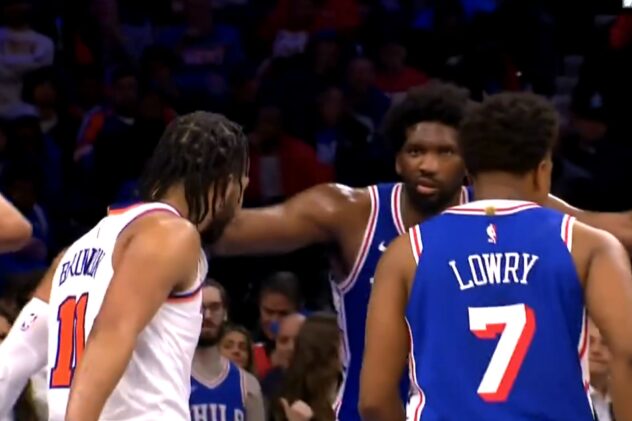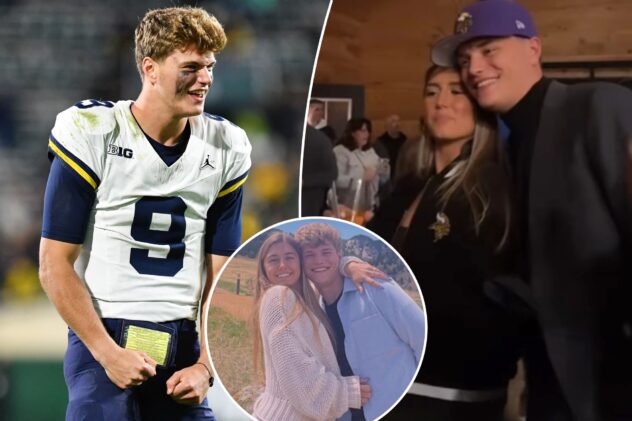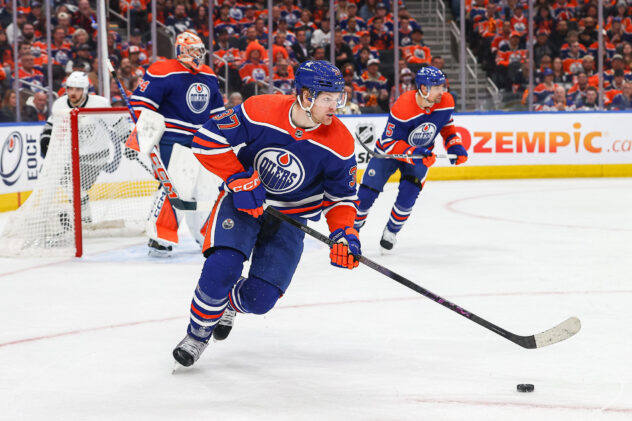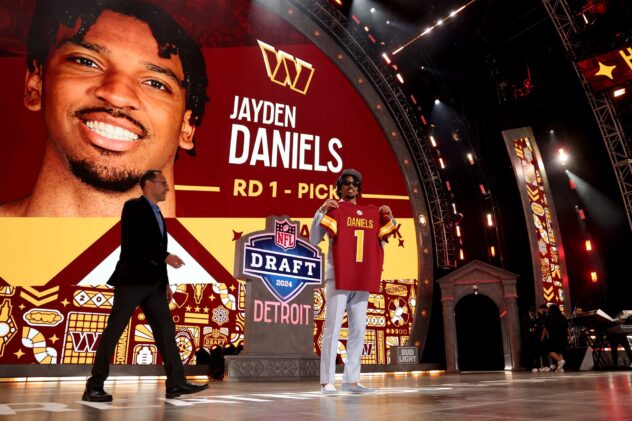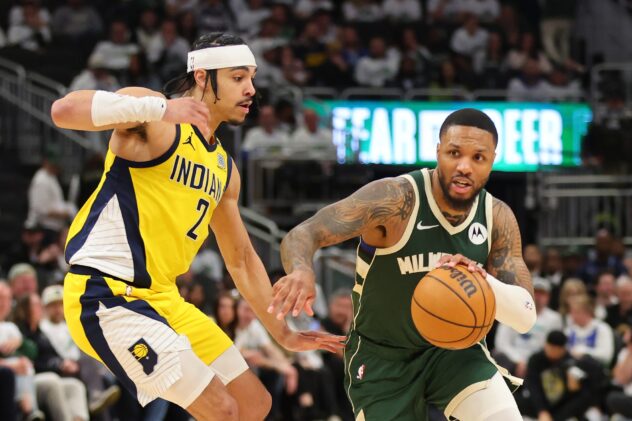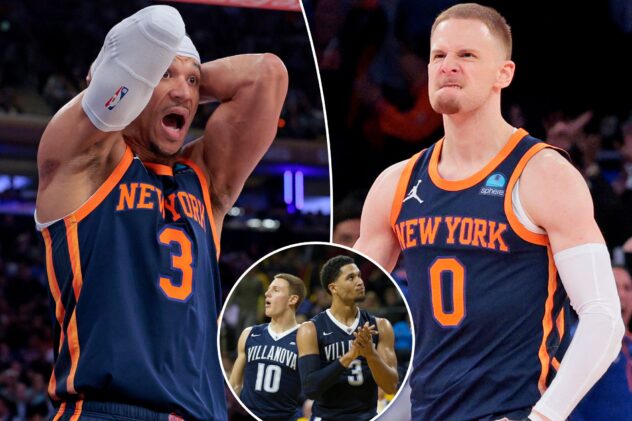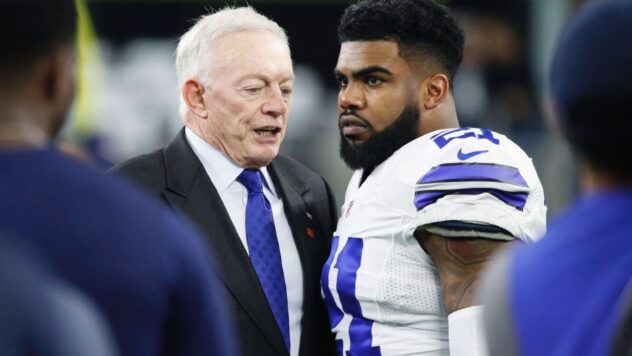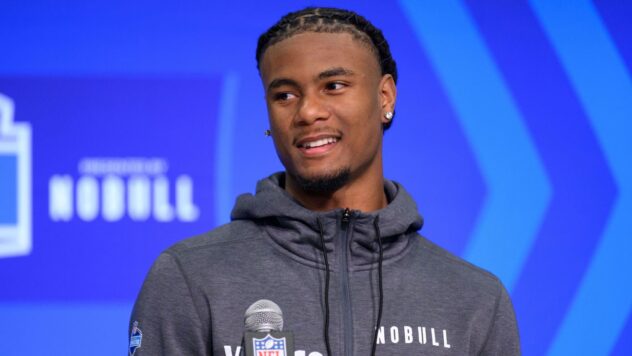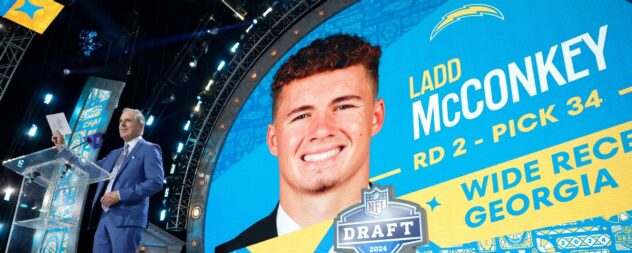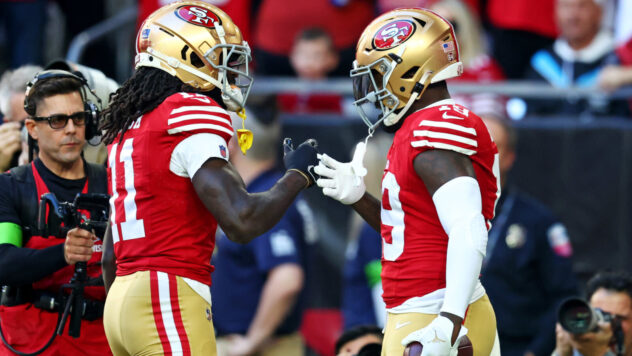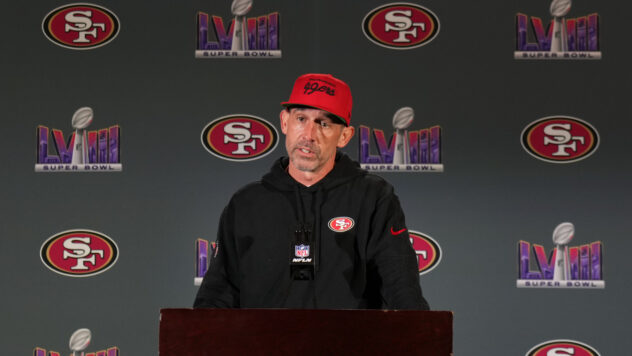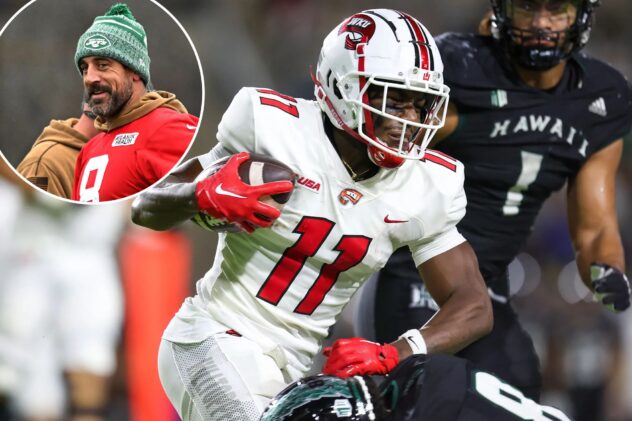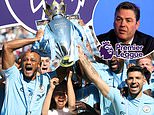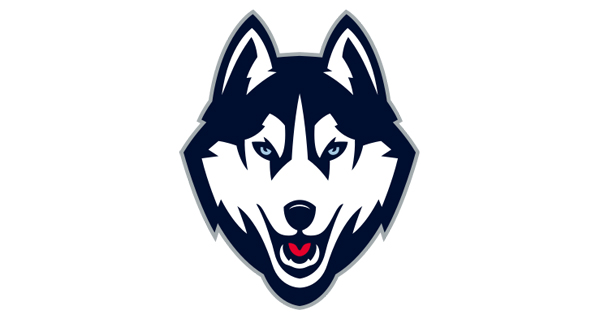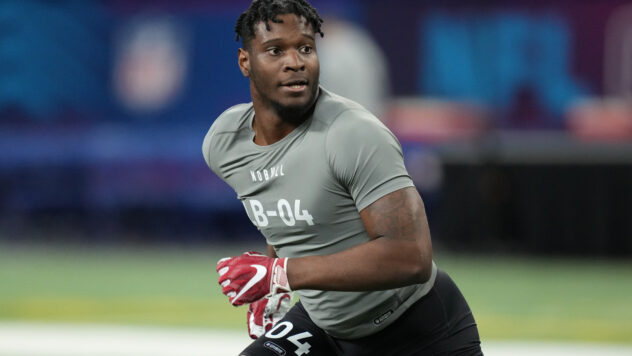Seven NBA Observations on the Spurs, Trade Rumors, and the Lakers’ Next Move
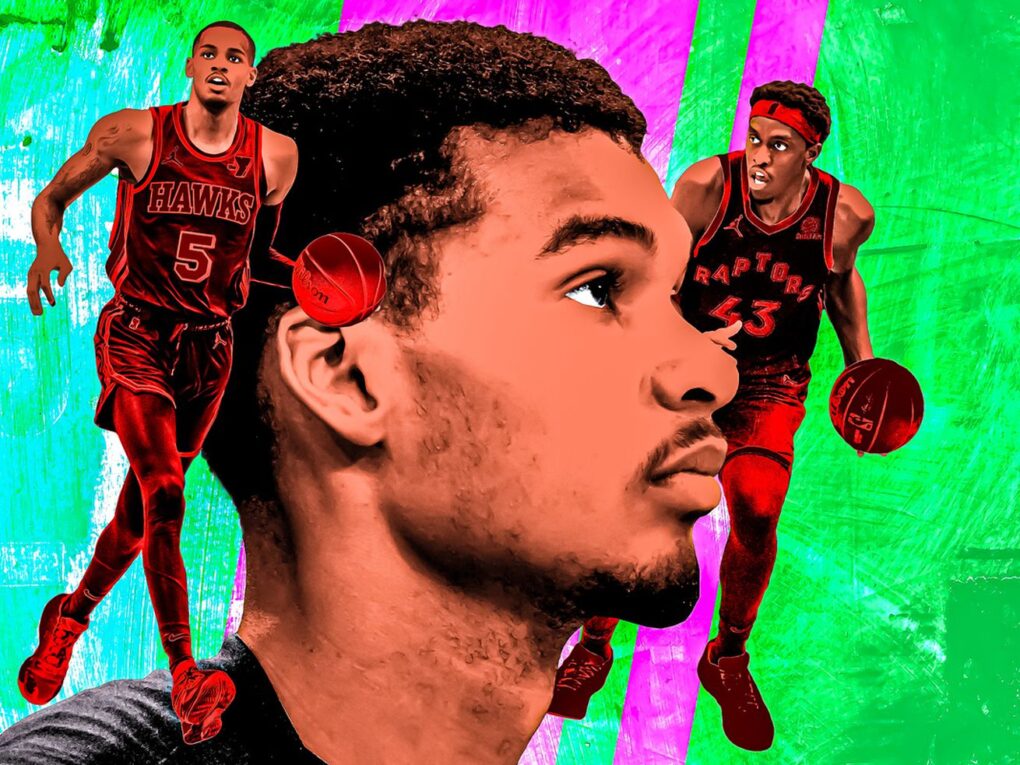
San Antonio desperately needs a point guard to pair with Victor Wembanyama. Who should it target? Plus, examining the Lakers, Kings, and Hawks ahead of the trade deadline.
With less than a month until the NBA trade deadline, the buzz is starting to pick up around the league. Which teams could make a move soon? In this week’s Seven Observations, we examine the San Antonio Spurs’ need for a point guard, the Atlanta Hawks’ dilemma, the Sacramento Kings’ Plan B, Keyonte George, a silver lining for the Washington Wizards, the Minnesota Timberwolves’ top defender, and the Los Angeles Lakers’ next move.
1. The San Antonio Spurs Should Make a Big Trade (Eventually)
You ever think about getting back with an ex? That’s what the Spurs are reportedly considering right now. In recent days, both The Athletic’s Shams Charania and ESPN’s Zach Lowe said the Spurs have registered interest in acquiring Dejounte Murray from the Atlanta Hawks. It makes sense. Victor Wembanyama hasn’t benefited from playing with a high-level point guard yet, and Murray was an All-Star in his final season with the Spurs, posting a 3.5 assist-to-turnover ratio. When he’s at his best, he’s an elite defensive guard who rebounds at a high level. Though he’s not defending at the same level for the lowly Hawks, he’s made significant strides as a scorer in Atlanta. The Spurs wouldn’t have been bad enough to win the lottery and draft Wembanyama had they not traded away Murray. But following a 7-31 start to the season, maybe getting back together with Murray could be the move the Spurs need to turn things around.
After trading Murray to the Hawks 18 months ago, the Spurs own Atlanta’s first-round picks in 2025 and 2027 plus the right to swap firsts in 2026. From people I’ve spoken with, the Hawks are asking for two firsts in return for Murray, who would prefer to join a team with a chance to make an immediate playoff run. So far, no one has met their demands. The problem for San Antonio is that Atlanta’s future firsts might be too valuable to give back. The Hawks look like a team on the ropes at 15-23, on the outside looking in at the play-in race in the East. Would it really be in San Antonio’s best interest to send even one of those picks back when their value is skyrocketing?
Of course, it’s clear why the Spurs would be interested in a Murray return. Starting Tre Jones at point guard has shown San Antonio’s upside with a true floor general at the helm. In over 239 minutes with Wemby at center and Jones at point guard, San Antonio is outscoring opponents by 8.6 points per 100 possessions, according to PBP Stats. Running the offense through Jeremy Sochan was a worthy experiment to find out how he could handle an expanded role, and it helped raise the Spurs’ lottery odds in the process. But a steady game manager who minimizes mistakes is what Wembanyama and the Spurs will need. If Murray were starting and Jones was coming off the bench, Wemby would always be paired with a shot creator (in contrast to some of the awkward lineups he’s been in this season).
But as good as Murray is, the Hawks point guard that the Spurs should be chasing is Trae Young. While Atlanta isn’t seeking out deals for Young as it is for Murray, we’re moving toward a point when those intentions could change. The Murray trade was a flop. Outside of Jalen Johnson, the draft picks on the wing haven’t panned out. The team is losing. Young wants nothing more than to win a title with Atlanta, but he’s posting big, empty numbers on a team that might not even make the play-in. Unless the Hawks become more than playoff fodder, it should surprise no one if Young, who is 25 and in the prime of his career, and the franchise mutually decide that a divorce is in everyone’s best interest.
San Antonio would be a dream fit for Young. Wembanyama and Young are both elite while being on opposite ends of the physical spectrum, making them a diverse duo that teams wouldn’t want to switch screens against. Trae is one of the league’s best at feeding easy shots to bigs, which would allow Wemby to score off of rolls and cuts on a regular basis. This season, Young has also embraced playing with more off-ball movement under Quin Snyder. If he was paired with a big with playmaking skills (like Wembanyama), then he could become even more potent in handoff and two-man actions. Together, they could be one of the league’s most powerful duos on offense. And on defense, Young is playing harder than ever; he’s small and will be targeted in the playoffs, but there’s no better antidote for a weaker defender than to have Wembanyama protecting the paint.
No team has a greater need for a point guard than the Spurs, making them an intriguing landing spot for Young. The biggest question, though, is whether Gregg Popovich would want Trae, an unproven system fit, over Murray, who made significant strides with the franchise—or the alternatives of building through the draft or targeting an entirely different player in a trade. Linking back up with Murray right now wouldn’t be the worst decision for the Spurs. But the chance to swipe right on Trae is worth the wait.
2. Should the Hawks Blow It Up?
Hawks fans, I can understand if you’re raging after reading my Spurs hypothetical. And if you scrolled past it, the TL;DR is: “The Spurs should try to wait to trade for Trae Young instead of trading for Dejounte Murray right now, because the Hawks are on the verge of imploding.”
Sorry, but that’s the reality of Atlanta’s situation: This is a franchise on a fast track toward a lot of big changes. I’m hesitant to say the Hawks should blow it up because after this year, the Hawks don’t have the rights to their own first-round picks until 2028. It’s unclear how strong of a market Trae would even have. Teams are hesitant to acquire Zach LaVine because of his enormous salary, and the same goes for Pascal Siakam, who will demand a massive contract this summer. Young is in the second year of a five-year, $215 million deal. Not many teams even need point guards. So what would the market really be: The Bulls, Lakers, Magic, Nets, or Wizards would enter the bidding. Maybe? But only San Antonio can send the Hawks back their own picks: firsts in 2025 and 2027 with the swap in 2026. That’d allow the Hawks to bottom out with their own draft picks in back-to-back draft classes featuring franchise-changing prospects (headlined by Cooper Flagg in 2025 and Cam Boozer and AJ Dybantsa in 2026). No other team can offer the Hawks the same luxury.
I wouldn’t expect Young and the Hawks to seek a trade ahead of next month’s deadline. It’s too soon. Young and Hawks head coach Quin Snyder get along great, and it’s not as if the team isn’t without any silver linings, with Johnson blossoming into a two-way force. The focus is on flipping Murray, accumulating assets, and seeing where they land—first following the deadline, and then in the draft. Young is dealing with a left calf contusion, so if the team keeps dropping games, maybe it’ll even decide to sit him to tank games to improve its lottery odds. The 2024 class lacks a no-brainer star, but a top pick would help grease a trade to bolster the team around Young. If Atlanta’s future doesn’t look promising soon, though, then the Hawks and Young may mutually decide it’s for the best to part ways.
Oh God…
The Hawks are now 15-23.
The 11th seed in the East.
Not even in the play-in. pic.twitter.com/mFtn6pvIVE
— Kevin O’Connor (@KevinOConnorNBA) January 14, 2024
3. I Watched the Wizards so You Don’t Have To
Did you know a trade was made this weekend? OK, it wasn’t exactly a blockbuster. The Washington Wizards sent Danilo Gallinari and Mike Muscala to the Detroit Pistons for Marvin Bagley III, Isaiah Livers, and two second-round picks. I mean, wow. I’m tempted to write 9,000 words on it, but instead I’ll summarize it in three sentences: The Pistons are clearing space for this summer. The Wizards are picking up draft capital. And both teams probably aren’t done making moves.
Let’s focus on the Wizards. There’s more noise around them right now. In the coming weeks, we’ll undoubtedly hear trade rumors related to Kyle Kuzma and Tyus Jones. Kuzma is a known commodity at this point, but Jones is the more interesting piece from Washington’s perspective. Jones leads the team with a career-high 5.6 assists per game (while posting under one turnover per game for the ninth consecutive season). And this season, he’s scoring 1.14 points per pick-and-roll, one of the top marks in the league, according to Synergy. Jones is exactly the type of point guard that could help a lot of playoff teams, just as he did for years in Memphis.
Removing Jones from the equation in Washington would provide more touches to Jordan Poole, who is (surprisingly) playing a more controlled brand of basketball as of late, and one of their standouts this season, Deni Avdija, who is in only his fourth season and is starting to look like the player the Wizards hoped he would be when they drafted him ninth in 2020.
Avdija is a good individual defender: versatile on the ball across positions and active off the ball with stunts and recoveries. On Saturday against the Hawks, the 6-foot-9 forward played suffocating defense against players of all shapes and sizes: center Onyeka Okongwu, forward Jalen Johnson, and point guard Trae Young. In the clip above, he rapidly slides laterally and then swats away Trae’s layup.
The block was Avdija’s nicest highlight, but the 23-year-old finished the game with 19 points, 14 rebounds, and nine assists. This season, Avdija has posted multiple big games, but this was his best overall because of his range of activity on defense, his rebounding, and the load he carried as a playmaker.
The nine assists are a season high for Avdija, as the Wizards fed him chances to facilitate in transition, and he made kick-ahead passes to reward teammates for running the floor. In the half court, he sprayed the ball around in the pick-and-roll and made quick decisions within the flow of the offense:
Avdija isn’t the lead playmaker the Wizards might’ve once envisioned, but he’s still a high-level connector who can make hot-potato bounce passes like the one above.
This season, he’s posting career highs in touches, passes, and assists per game, all while limiting turnovers. Perhaps integrating some more ball-sharing principles into his half-court diet could bring even more production out of his game and develop cohesiveness among the group. The next move Washington makes could play into that a lot, whether it’s moving Jones to give Avdija point guard minutes, or moving Kuzma to play Avdija more in the frontcourt. But at the very least, Avdija’s individual development is one positive in what is a lost season.
4. If Pascal Siakam Is Sacramento’s Plan A, What’s Plan B?
It’s been well-reported at this point that the Kings are interested in Siakam. But last week, The Athletic’s Sam Amick said that Siakam, who will be an unrestricted free agent this summer, doesn’t view Sacramento “as a good long-term fit.” Siakam’s reported stance must be more about the city than the team because he’s an excellent fit for the basketball team. Siakam could be to Domantas Sabonis and De’Aaron Fox a lot like what Aaron Gordon has been to Nikola Jokic and Jamal Murray: providing versatile defense across multiple positions and the skill to fill any role on offense.
My understanding is that the Kings would still trade for Siakam even without the assurance that he’d re-sign, but his lack of commitment certainly changes the assets they’d be willing to give up alongside Harrison Barnes and Kevin Huerter. Odds are, the Kings would get outbid by a team that’s more optimistic that Siakam would stick around past this season.
Whether it’s Siakam or someone else, Sacramento’s goal is to turn Barnes, Huerter, and Davion Mitchell into upgrades to bolster the team’s odds of making a deep playoff run this season. The starting lineup that fueled last year’s run is beginning to trend down.
As I wrote about recently, Kings head coach Mike Brown has limited Huerter’s role this season, and Barnes isn’t an ideal fit next to Sabonis. Siakam is a much better complement to him. But if the Kings can’t get a deal done, they’ll need to review other options to improve on last season’s success.
Sacramento’s attention should also be glued on Blazers forward Jerami Grant and Pistons forward Bojan Bogdanovic. And not just on one of them, but both. Neither player is better individually than Siakam, but together they could be. In theory, the Kings could send Barnes and Mitchell with picks to Portland for Grant and send Huerter with picks to Detroit for Bogdanovic.
The Pistons fire sale may have just begun with the Bagley deal, and Bogdanovic could be next, with a number of teams interested. The Kings should be at the front of the line: Bogdanovic is a more seasoned offensive player than Huerter with his off-the-dribble game, and he’s a better defender, too.
Siakam is a better player than Grant in a vacuum, but Grant is arguably just as good of a fit in Sacramento because of his superior spot-up shooting and defense. They might not be considered franchise-altering acquisitions, but neither was Gordon or Kentavious Caldwell-Pope for the Nuggets. Glue guys are necessary. Acquiring both would maintain the Kings’ long-term flexibility while making them bigger on defense and more dynamic on offense, giving them a better chance to win it all. Not a bad plan B.
5. Rookie Check-In: Keyonte George
The Utah Jazz have turned their season around, winning 11 of their past 13 games to move to 21-20. They’re now ahead of the Lakers and the Warriors in the Western Conference standings. On Saturday, one of their biggest contributors was rookie point guard George, who played 27 minutes, including the final 17 minutes, to finish with 19 points, three assists, and three boards.
“I’m a basketball junkie, so I’m trying to do everything I can to have a great, long career,” George told me recently.
It’s been an up-and-down season for George, who has bounced between the bench and the starting lineup while also missing six games due to left foot inflammation. In 25 minutes per game, George is averaging 11.1 points on 51.6 percent true shooting. The former Baylor guard is making only 36.6 percent of his layups and just 31.4 percent of his jumpers, according to Synergy data. At 6-foot-4, without elite hops, he’s been blocked 22 times.
“You get to the paint, them boys are 7 feet,” George said. “So it’s just adjusting to the length, and guys are stronger. I’m getting stronger, just taking this season day by day, continuing to work on my body.”
His playmaking has been the key to earning minutes throughout the year, as he seems to make at least one “WOW” pass every game. Earlier this season, the 16th pick rifled an underhand pass to a cutting Lauri Markkanen for this highlight:
George plays with flair but also displays a seasoned pace for a 20-year-old, showing a feel for navigating pick-and-rolls with manipulative feeds to spot-up shooters or rollers:
In the clip above, George is driving against Rudy Gobert and looks fully committed to the right side before alternating hands mid-dribble to find his teammate inside. Even the three-time Defensive Player of the Year looks like he doesn’t see it coming.
“I’m already adjusted to the speed of the game. The reads are slowing down for me,” George said. “So it’s just about now just getting stronger and continuing to learn, continuing to slow the game down for me. So when I’m in between those lines, it is patterns.”
George’s body needs to catch up with his mind. The Jazz front office told George before the season that the key to reaching his potential is getting into elite-level shape, so the team is focusing on improving his lower-body stability and control while also adding strength and hypertrophy in his upper body. George has always displayed touch from the free throw line and floater range, even going back to high school. But that hasn’t quite translated beyond the arc. The Jazz hope a stronger body could lead to better conditioning and deeper range.
“There’s no reason for me to stop being aggressive and not trust myself in shooting the ball,” said George, who is trying to find other ways to impact the game in the meantime. “At the end of the day, you’re going to make or miss shots, but that’s not what’s going to ultimately lose you a basketball game. It’s all the other things.”
George’s defensive impact has fluctuated, too. He’s had some intense on-ball moments. But he’s also had plenty of lackadaisical stretches (and others in which he just looks downright lost), especially this month since returning from injury. But this is to be expected for any rookie, both from a conditioning standpoint, when he’s already played more games than he did in college, and from an awareness standpoint.
“It’s all not going to come together in one day, two hours of practice, or a 30-minute workout,” George said. “You got to keep stacking days, and then at some point, it’s just going to start to be natural. I know my time is going to come.”
Becoming a steady defender and a more efficient scorer is something that could take years. But his time for heavier minutes could come sooner depending on what the Jazz do at the deadline. Trade winds are swirling around All-Star forward Markkanen, but it’s more likely that the Jazz will move on from their surplus of guards like Collin Sexton and Jordan Clarkson. The more growth George shows in the coming weeks, the more likely the Jazz will feel he’s worth the commitment.
6. Nitpicking Minnesota
Last week, Jaden McDaniels showed why he’s one of the NBA’s premier defenders by locking down the Magic’s Paolo Banchero, just as he’s done to so many opposing stars in recent years. McDaniels is one of the cogs in Minnesota’s top-ranked defense, which is fueling the team to a tie atop the Western Conference standings. But because the team is so good, when it slips, mistakes will get magnified.
The following game, McDaniels had one of his worst performances of the season in a loss against the Boston Celtics. In 24 minutes, he had more fouls (six) than points (five). McDaniels was too handsy as a defender and seemed too emotional when things weren’t going his way. In the closing minutes of regulation, he committed multiple boneheaded mistakes by failing to box out Derrick White on a missed free throw and taking an ill-advised stepback 3.
Wolves fans, what’s the deal with Jaden McDaniels?
Obviously an excellent defender but tonight…man, that was rough. In the final minute he didn’t box out White on the offensive rebound off a missed free throw. And that happened one play after this air-ball step-back 3.
Maybe… pic.twitter.com/KcgbJn7S2j
— Kevin O’Connor (@KevinOConnorNBA) January 11, 2024
A situation like the one above will inevitably come up again: Anthony Edwards gets doubled and is forced to give up the ball, and then McDaniels needs to make a play. In this instance, McDaniels chose wrong: He isolated against Jrue Holiday and then forced up an air ball. On the season, McDaniels is now shooting 16.7 percent on dribble jumper 3s. At some point, it’d be wonderful if he could extend his range beyond the arc. But if not, this blunder could serve as a learning experience ahead of the playoffs. McDaniels should have attacked decisively off the closeout. With two players on Edwards, someone is open, and there is no rim protector inside. There was more than enough time left on the clock for him to make a play. Odds are a drive would have led to a better result, with a layup for himself or a kickout to a wide-open Nickeil Alexander-Walker in the corner or Karl-Anthony Towns on the wing.
Without a doubt, McDaniels is an elite perimeter defender, a necessary piece for Minnesota—he looked the part again on Sunday against the Clippers. But his streakiness on offense is something that’ll need to improve by the playoffs for the team to win the title—and certainly by next season, once his contract extension kicks in.
7. What’s the Lakers’ Next Move?
The Lakers winning the inaugural NBA in-season tournament now feels like forever ago. LeBron James is still performing like an All-NBA talent at 39 years old, and Anthony Davis is still looking like a Defensive Player of the Year candidate while also posting monstrous offensive numbers. Yet the Lakers are 5-12 since winning the NBA Cup in Las Vegas, bringing them to a 19-21 record, with the 11th seed in the West, and a bad offense and an average defense.
So who’s to blame? Unfortunately, it’s not that easy. No one person is at fault for this mess.
Going back to the offseason, the Lakers had a chance to select Jaime Jaquez (who went 18th to the Heat), Brandin Podziemski (19th to the Warriors), or Cam Whitmore (20th to the Rockets)—all of whom have made immediate contributions in the league. Instead, they took Jalen Hood-Schifino, who has played a total of 75 minutes, with the 17th pick.
Newcomers have not panned out: Cam Reddish can’t hit a shot, Taurean Prince doesn’t move the needle, and Gabe Vincent has barely played.
Mistakes were made by Rob Pelinka, but the roster still resembles what he put together after a successful trade deadline last year. Head coach Darvin Ham can’t find the right combinations despite the continuity. D’Angelo Russell was moved to the bench. Austin Reaves is on a shorter leash. Rui Hachimura has seen his role fluctuate. Ham often looks perplexed as he stands on the sideline, with his hands stuffed in his pockets, reversing all the good things that worked last season.
But despite all the struggles, Bleacher Report’s Chris Haynes reported that Pelinka and Lakers owner Jeanie Buss informed Ham that his job is “not in jeopardy.”
So, salvaging this season will have to come down to trades again: Could the Lakers move Reaves to Atlanta for Murray? Perhaps they’ll go all in for Zach LaVine and maybe get Alex Caruso back? Or maybe they’ll make moves around the fringes, like targeting Bojan Bogdanovic from the Pistons? Any of these moves would help in different ways. But a massive needle-mover would have to wait until the summer, when the Lakers will likely be able to trade firsts in 2024 and 2029, plus swaps in 2026, 2028, and 2030. Pelinka would be able to do a lot more with that trade package than he can with what he has now, which is the dilemma he faces: How do you bypass going all in now with LeBron and AD playing at this level? LeBron will turn 40 next season and there’s no guarantee AD will be as healthy as he is now. It’s tempting to wait, but the Lakers kind of have no choice but to go for it all now.

